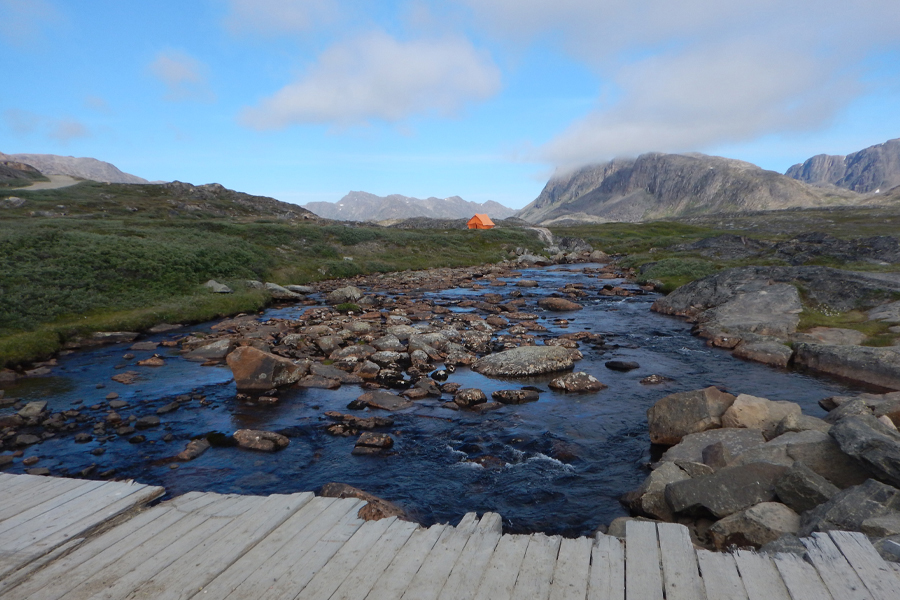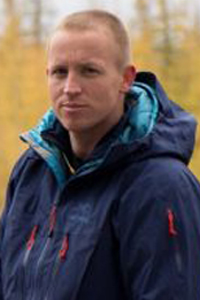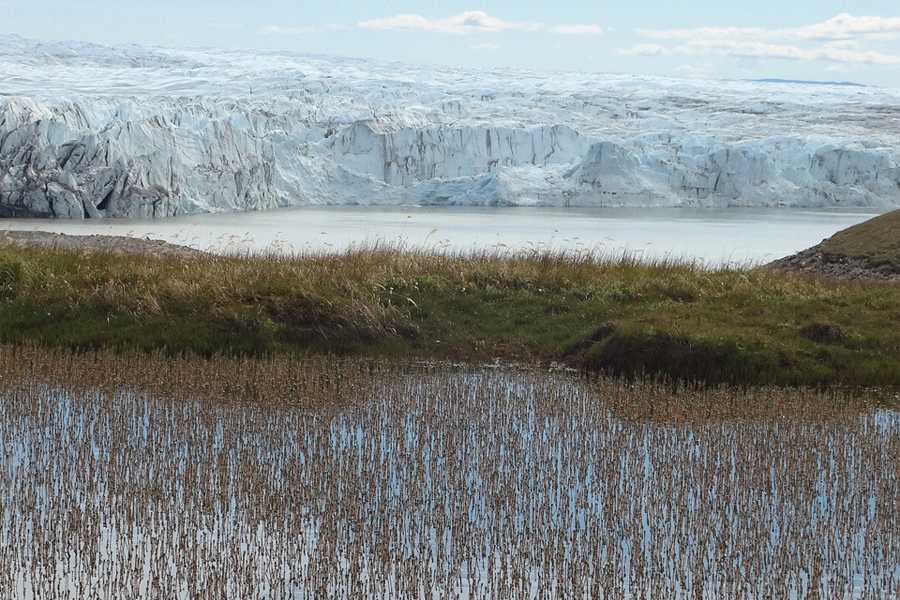
As the ice sheet covering most of Greenland retreats, Florida State University researchers are studying the newly revealed landscape to understand its role in the carbon cycle.

FSU researchers Anne Kellerman, a postdoctoral researcher in the Department of Earth, Ocean, and Atmospheric Science, and Associate Professor Robert Spencer explored the composition of dissolved organic carbon in the lakes and streams on the island and found that the newly thawed landscape was feeding these bodies of water with rich carbon sources. This dissolved organic carbon that forms the basis of the microbial food web was then degraded by the intense sunlight that comes during the summer months in Greenland. Their findings were published in Limnology and Oceanography.
Knowing that the landscape is an important driver of the carbon found in the lakes affects the predictions scientists make about the future of the climate there and the types of life these environments may support.
"This was a first step toward making projections as the ice sheet retreats in Greenland, and what that means for carbon cycling, especially in aquatic environments in the region," Spencer said.
The lakes the researchers studied have high organic carbon concentrations, which typically are found in bodies of water with darker coloration, such as the swamps that are found throughout much of Florida. But the water in these Arctic lakes is optically much clearer than would be expected with the high organic carbon concentrations. The same scenario has been described in other arid regions that receive lots of sunlight.

"You have this atypical situation, where you have these high organic carbon concentrations, and we're interested in what's causing that and if it's going to stay that way or how it may change," Kellerman said. "As it stands today, I don't know that we necessarily know the definitive answer to that yet, but what we have done is provide a possible explanation for this scenario."
After collecting samples, researchers used an ultrahigh resolution mass spectrometer at the FSU-headquartered National High Magnetic Field Laboratory to investigate the tens of thousands of individual organic molecules observed in each water sample.
"Different types of organic matter play different roles in the environment, and they also can degrade by different processes and at different rates," Kellerman said. "Some parts of the carbon pool are relatively resistant to degradation and might eventually end up as a long-term carbon store."
Dissolved organic matter is a major part of the global carbon pool. As more land is exposed in a warming Arctic, questions about the source of that matter and its implications for carbon cycling become more important.
"Since we've had advanced scientific research on Earth, we've not had environments like that which we are seeing opening up every year in the Arctic," Spencer said. "It's changing very, very quickly. So it's posing all these questions in rapid succession."
Researchers from the University of Florida, the University of South Florida and the University of New Orleans contributed to this study. The National Science Foundation, National Geographic Society and the State of Florida supported this work.







